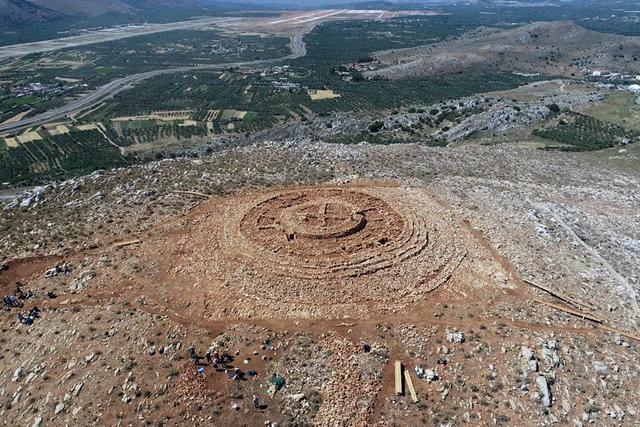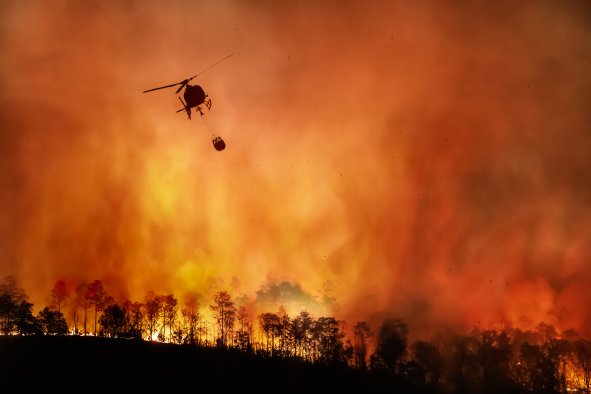Accelerating "wind" from black holes may help shape the galaxies surrounding them, a new study suggests.
A team of astronomers, including from the University of Wisconsin–Madison and the University of Arizona, analyzed years of observations of a quasar—bright cores of a galaxy thought to be powered by a supermassive black hole—to find unexpected changes in the gases surrounding a black hole.
The new findings, presented at the 244th meeting of the American Astronomical Society and published in The Astrophysical Journal, highlight how black holes can influence the evolution of the galaxies that surround them.
These winds are actually clouds of gas moving at more than 10,000 miles per second due to the force of the radiation emitted from the black hole, and can even be strong enough to stop stars from forming.
Kate Grier, a professor in the Department of Astronomy at the University of Wisconsin–Madison, told Newsweek: "Some studies indicate that some of these winds do have enough energy to blast out into the host galaxy and interrupt/affect star formation, either by compressing gas, which spurs star formation or by removing gas, which will inhibit star formation."
"Other studies have found evidence that there is not enough energy in these winds to provide significant feedback," she said. "One of the reasons we are interested in determining how these winds are produced is to try to help determine the answer to that question."
Supermassive black holes are believed to exist in the centers of large galaxies in our universe. Astronomers examine them by observing how the material surrounding them reacts to their huge gravitational pulls.
If the material gets too close to the black hole, it is pulled in and forms an "accretion disk" of gas and dust as it is eaten by the hole. This disk remains steady if the black hole has a constant supply of material.
The material reaches very high temperatures and emits light, which means the supermassive black hole is designated as "active." The brightest ones are called quasars.
The team studied 130 observations of a quasar called SBS 1408+544, made over nearly a decade. The quasar they studied is billions of light-years away in the constellation Boötes. The information was gathered by the Sloan Digital Sky Survey, otherwise known as the Black Hole Mapper Reverberation Mapping Project.
To investigate the quasar, astronomers examined its spectra—a measure of how much light the quasar gives off at each wavelength from ultraviolet to infrared. This allowed them to watch and measure light fluctuations and learn about the movement of gas in the accretion disk.
The researchers mapped out winds made up of gaseous carbon by looking at where the light that should have been emitted from the quasar was missing. This light was being absorbed by the gas.
However, instead of being absorbed in the area that the scientists expected, the shadow appeared to move further away every time they observed the quasar.
"That shift tells us the gas is moving fast, and faster all the time," said one of the researchers, Robert Wheatley, a recent graduate at the University of Wisconsin–Madison, in a statement. "The wind is accelerating because it's being pushed by radiation that is blasted off of the accretion disk."
Astronomers are fascinated by the winds pushing gas out from quasars because they can create huge amounts of pressure. These winds have the potential to stop a star from forming or speed up its formation.
"Quasars are difficult to study because they are so far away that even though they are emitting a lot of energy, they appear pretty dim. This means that you need a decent-sized telescope to collect enough light to get a good signal," Grier said.
"For our group's studies of quasars, we are looking for variability in quasars – which means that we need to monitor quasars regularly over very long periods of time. This requires an enormous investment of telescope time if you want to observe many different quasars."
Do you have a tip on a science story that Newsweek should be covering? Do you have a question about space? Let us know via science@newsweek.com.
Disclaimer: The copyright of this article belongs to the original author. Reposting this article is solely for the purpose of information dissemination and does not constitute any investment advice. If there is any infringement, please contact us immediately. We will make corrections or deletions as necessary. Thank you.



